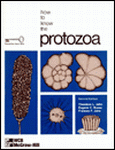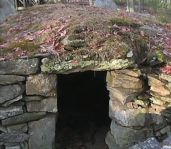|
by Theodore L. Jahn, Eugene C. Bovee, and Francis F. Jahn  This book can open our eyes to an invisible world all around us
This book can open our eyes to an invisible world all around us
Jahn, Bovee, and Jahn's work is the best possible beginning textbook for the amateur naturalist. In clear scientific language, the authors provide an introduction to protozoa: their reproductive behavior, their methods of propulsion, their environments, and their life cycles. The book describes over 500 species of the subkingdom Protozoa, and also explains how to how to define and classify them, collect, preserve, and observe them under the microscope. All around us--in pools of standing water, under rocks, on our lawns, in our aquaria, on the moistened branches of oaks, on our vegetables, in our toilets and sinks--and even inside us and our pets--there are countless organisms, invisible to the naked eye, occult to our blinkered sensibilities, swimming, flailing, creeping, swarming and generally existing without our knowledge. This book will help identify these creatures, whose biomass far outweighs ours, who have been here since a time before our kind arrived on this globe, and who will take back their dominion once we have shambled off into oblivion. It is a sobering realization that though they do not need us to exist, we would become extinct without their presence, even though various members of the kingdom Protista are toxic to our species. During a visit to a zoological garden or aquarium, one is very fortunate if one sees two of the larger carnivores playing, or two ruminants reproducing or giving birth. One almost never has the luck (or misfortune) to see a large species preying upon another. And the movements of these creatures are usually so restricted that nothing akin to their behavior in their native environments is evident. Place a bit of pond scum beneath a microscope, however, and the viewer can see all of these activities take place in a mere drop or two of water, in the course of an hour. There is nothing quite like the experience of seeing the ameba Chaos carolinense absorb a Paramecium, or a member of the Podophryidae sucking another protozoan dry of its cytoplasm, or a beautiful blue Stentor coeruleus creating a vortex, like Homer's Charybdis, and pulling smaller organisms into the wide end of its trumpet shaped body. Likewise, there are many opportunities to see the various protozoa reproduce: to watch a Coleps divide into two new independent creatures, or a new Vorticella budding off from another, and swimming off to establish itself elsewhere, or two Ciliophora fuse temporarily to exchange DNA. Under the microscope, one can view the Lacrymaria olor sweep its long necklike member through the water like a scythe, or the graceful helical gyrations of a Euglena, or the Litonotus fasciola as it glides across the slide like a miniature plesiosaur. This book serves as an introduction to the wonders of this otherwise invisible world. It is also a starting point for an adventuresome naturalist, and an excuse for travel. In pursuit of the protozoa found in this book, I have rambled through the woods and deserts of the globe, coursed the oceans and visited their shores, travelled by steamer up the Congo, and wandered the frozen wastes of the Leng Plateau. I have drilled into the long forgotten layers of sedimentary rock in quest of long dormant or fossilized specimens, and dug in unhallowed damps to find those species that feed on necrotic flesh. One need not work so hard to enjoy the field of protozoology, however; a stroll to the local pond can provide samples of life just as fascinating as those on the other end of the globe, and lead to a deeper understanding of the creatures with whom we share this sphere. I know of no better way to introduce the naturalist to this fascinating, rich and overwhelmingly varied group of creatures than this book. |

